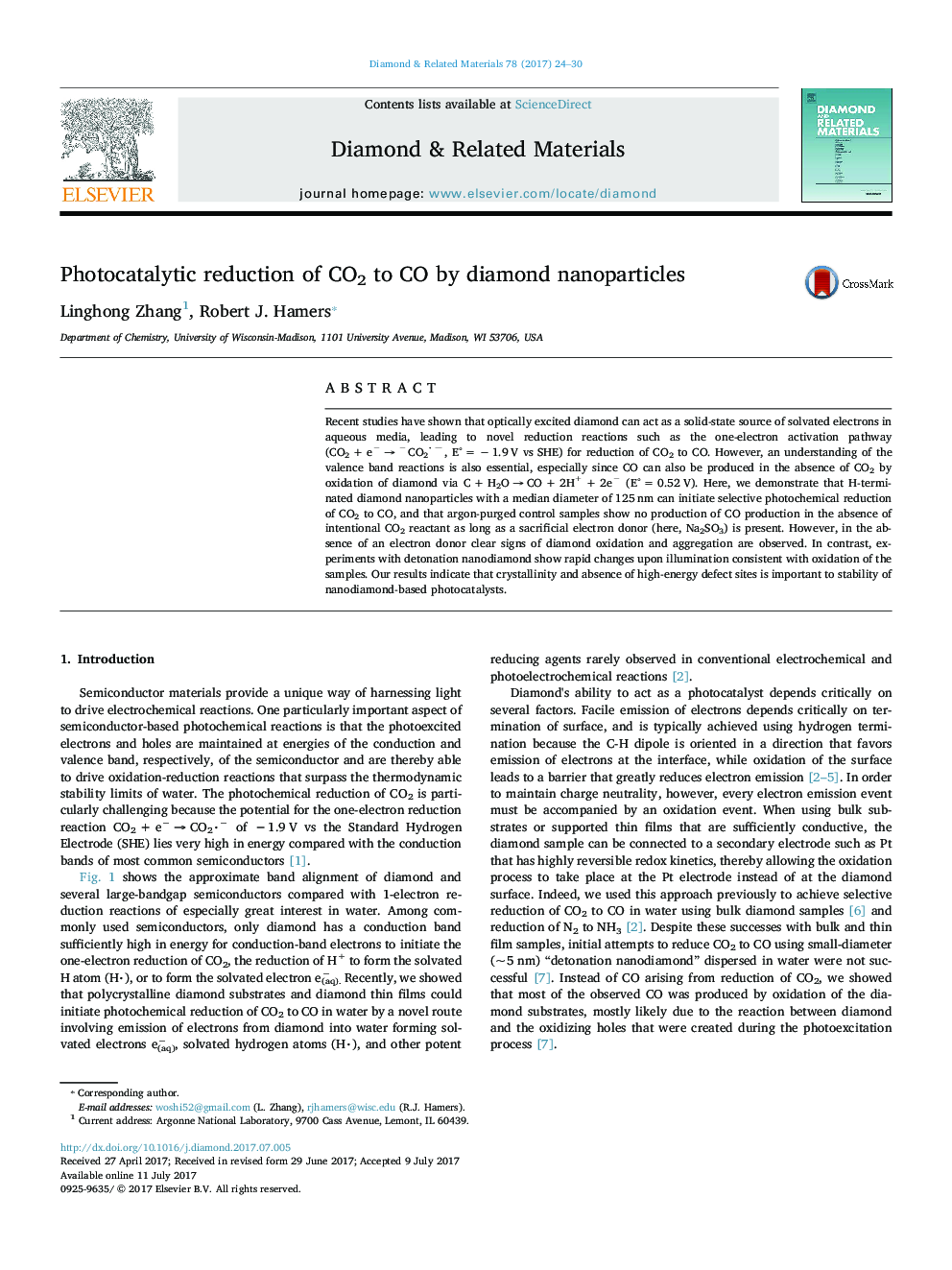| کد مقاله | کد نشریه | سال انتشار | مقاله انگلیسی | نسخه تمام متن |
|---|---|---|---|---|
| 5000517 | 1460753 | 2017 | 7 صفحه PDF | دانلود رایگان |

- UV-illuminated diamond nanoparticles can reduce CO2 to CO in water.
- 125Â nm diameter nanoparticles yield good photocatalysis.
- Detonation nanodiamond etches with low photocatalytic yield.
- Degradation in efficiency is eventually caused by surface oxidation.
- Stability can be enhanced by introducing an electron donor into solution.
Recent studies have shown that optically excited diamond can act as a solid-state source of solvated electrons in aqueous media, leading to novel reduction reactions such as the one-electron activation pathway (CO2 + eâ â â CO2â, E° = â 1.9 V vs SHE) for reduction of CO2 to CO. However, an understanding of the valence band reactions is also essential, especially since CO can also be produced in the absence of CO2 by oxidation of diamond via C + H2O â CO + 2H+ + 2eâ (E° = 0.52 V). Here, we demonstrate that H-terminated diamond nanoparticles with a median diameter of 125 nm can initiate selective photochemical reduction of CO2 to CO, and that argon-purged control samples show no production of CO production in the absence of intentional CO2 reactant as long as a sacrificial electron donor (here, Na2SO3) is present. However, in the absence of an electron donor clear signs of diamond oxidation and aggregation are observed. In contrast, experiments with detonation nanodiamond show rapid changes upon illumination consistent with oxidation of the samples. Our results indicate that crystallinity and absence of high-energy defect sites is important to stability of nanodiamond-based photocatalysts.
226
Journal: Diamond and Related Materials - Volume 78, September 2017, Pages 24-30